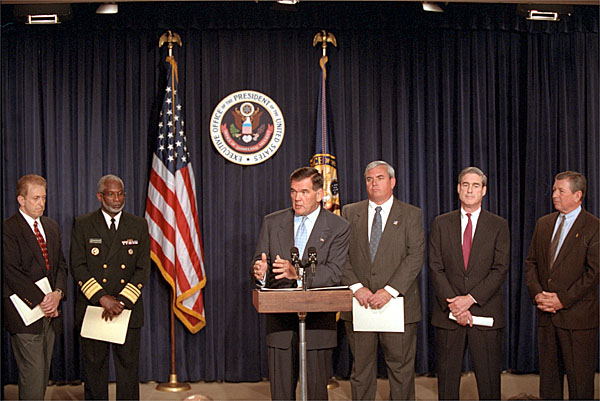Because it is understood in so many different ways by so many different constituencies, no discussion of public safety can proceed meaningfully without a provisional definition of the term. For the purposes of this article, we will define public safety as a range of services provided to a defined community to prevent, deter, and respond to man-made and non-manmade threats facing its citizens and their property. Public safety agencies include a wide range of institutions from municipal agencies to independent non-profit organizations and even for-profit companies that provide policing, fire suppression, and emergency management services.
The National Flood Insurance Act of 1968, the Fire Prevention and Control Act of 1974, and the Omnibus Fiscal Year 1996 Appropriations Act created some of the first public safety programs, which were precursors to the Emergency Management Performance Grants (EMPG), Assistance to Firefighters Grants (AFG), and the Justice Assistance Grants (JAG). As a result of the rationale for which they were created, these programs were focused on specific agencies and supported specific objectives.
Later, the federal government responded to the terrorist attacks of September 11, 2001, by creating a new agency, the Department of Homeland Security (DHS). This agency was constituted from 22 agencies that had been operating within other departments, and today DHS is the third largest department (by number of employees) in the country. Moreover, most public safety programs that existed at that time were given to DHS to administer.
The unclear role of this new agency and the fuzziness of the working definition of terrorism, combined with a lack of any cohesive plan, led in policy and funding to what could best be described as a multi-pronged approach to dealing with the terrorist threat. While the pre-911 programs (EMPG, AFG, and JAG) have continued with only minor tweaks, the biggest homeland security programs, distributed under the umbrella of the Homeland Security Grant Program, focus almost exclusively on preparing for, deterring, and responding to a terrorist attack. This early focus on terrorism to the exclusion of other threats to the nation is largely to blame for the lackluster response to Hurricane Katrina in 2005 and the underfunding of day to day emergency management and law enforcement activities.
Another consequence of the dramatic expansion of funding for homeland security has been a change in the language of grant seeking for public safety, from a focus on community needs in the context of the agency’s mission to a discussion of how equipment and training could also be applied to respond to a terrorist threat. This in spite of the fact that the day-to-day demands on most of these agencies, and the issues they face, are decidedly local and are almost entirely unrelated to foreign terrorism.
As DHS has matured, its orientation has become broader – encompassing manmade and non-manmade (i.e., natural) disasters. That too has developed over time, from the sector-specific National Infrastructure Protection Plan to the current, and most inclusive, National Preparedness Goal. But there remains a significant gap between funding for state and local law enforcement from the Department of Justice (not a component of DHS) and that from DHS’s Homeland Security Grant Program.
Rather than unifying funding, DHS’s involvement has added complexity to the landscape. As it stands, funding for public safety may come from the Departments of Homeland Security, Justice, Transportation, Agriculture, Health and Human Services, and State, through different programs that may change, appear, or disappear from year to year. Of course, sifting through the shifting sands of funding prospects is a grants development professional’s core competency and is an especially important qualification in today’s environment!
Today, cities, counties, schools, colleges, and hospitals that are seeking funding for a security or preparedness project will want to consider as many sources as they can in order to develop a comprehensive pool of prospects, and flexibility in their project designs will enable them to keep pace with the next stage in the evolution of funding.
